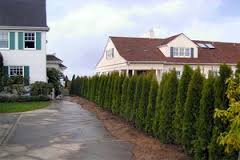 One of this author’s first lessons in Property Law class involved the concept of adverse possession. Under this legal principle, one party may acquire title to the property belonging to another. In New York, the elements required to establish adverse possession in the governing statute have been modified after 2008.
One of this author’s first lessons in Property Law class involved the concept of adverse possession. Under this legal principle, one party may acquire title to the property belonging to another. In New York, the elements required to establish adverse possession in the governing statute have been modified after 2008.
Prior to 2008, the following items had to be proven in order to establish the right to acquire title through adverse possession: hostile/adverse with claim of right/title (meaning that the possessor must believe that he owns the property); actual (an act on the part of the possessor must be conducted on the subject property); open/notorious (the possessor must be acting in a manner that an observant property owner would be able to see their activity); exclusive (if a fence, gate or wall is installed it may prevent other parties from entry and make the possession exclusive to the possessor); continuous for ten years (the owner is out-of-possession for at least ten years); and likely to be cultivated or improved (gardening, lawn mowing and the like have been conducted by the possessor or the possessor built a structure such as a shed or other building) or protected by an enclosure (such as a gate or fence). Permissive use does not give rise to an adverse possession claim.
As a result of the New York recent case known as Walling v. Pryzyble , the “hostile” element from the adverse possession standards has been removed. Further, property need not be cultivated or improved to give rise to an adverse possession claim. The updated standard is that there is a reasonable belief that the property belongs to the possessor.
In order to clarify the previous statute and case law, several new provisions were added to the applicable statute. This provision specifies that de minimus non-structural encroachments such as fences, hedges, shrubbery, plantings, sheds and non-structural walls are deemed permissive and not adverse. This is logical because these items may not have been installed using precise property measurements or a survey and can be easily removed. Mowing the lawn or other maintenance across the boundary line of the adjoining property owner is deemed permissive and non-adverse. For example, in a recent real estate transaction closed by our attorneys , the purchaser was concerned because she observed the adjoining property owner mowing the lawn in an area that she believed belonged to her seller. We relied upon this statute to advise her that mowing the lawn, in itself, will not give rise to the neighbor’s claim of adverse possession.
Title companies are concerned if the owner is out-of-possession of more than one foot of the property. In a prior post, we have written about how out-of-possession issues can be addressed. Considerations should be made as to whether a fence should be moved, a gate should be installed or whether the entry into a boundary agreement or encroachment agreement is advisable. Our attorneys are available to discuss adverse possession issues with our professional partners such as title companies in order to advise our clients accordingly. We look forward to your inquiries.
 New York Real Estate Lawyers Blog
New York Real Estate Lawyers Blog

